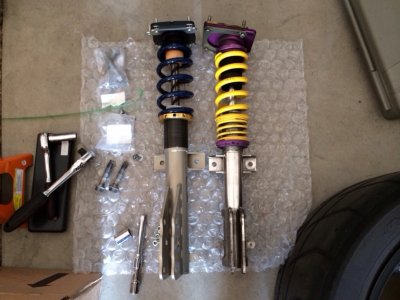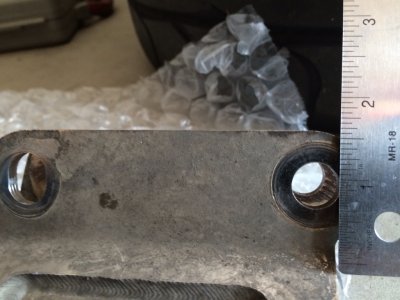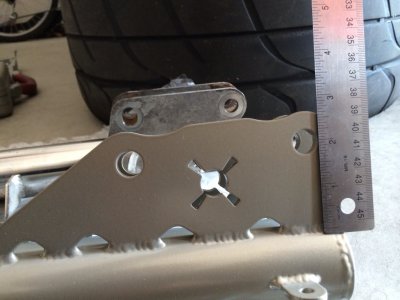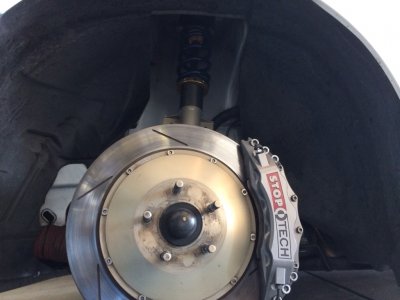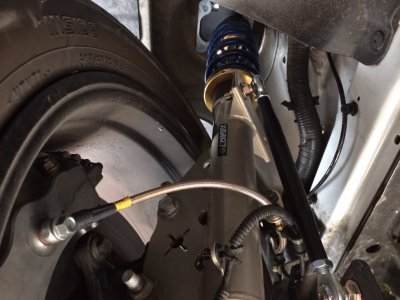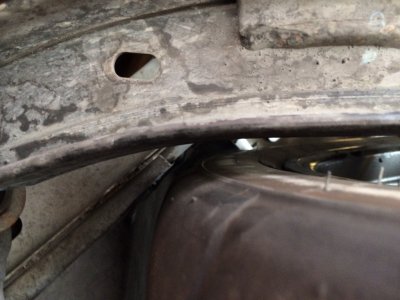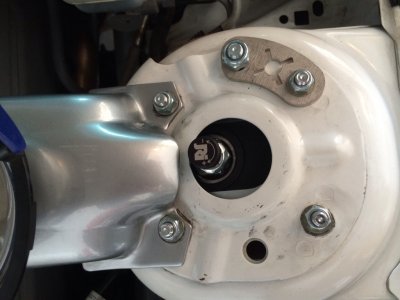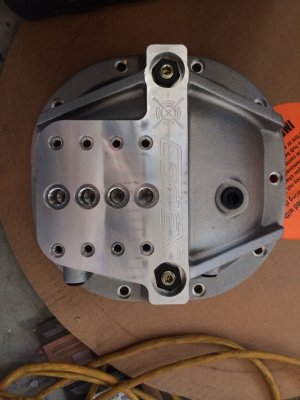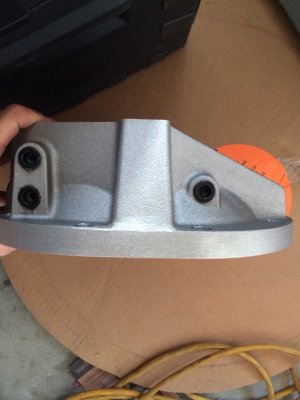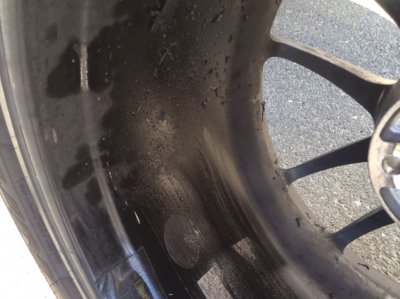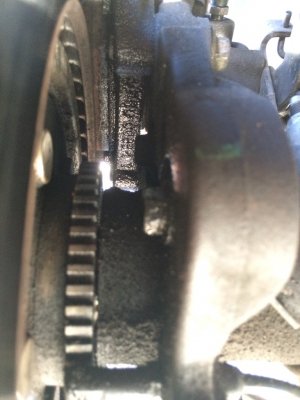Ok, I took you out of context. I also assumed that you thought like what a massive suspension community says. Don't worry Dave, I got you placed
well above the general retardation of the internetz, but I think it was a "fair" error on my part to take you out of context considering it's as common as it is. It at least allows me to raise my point.
What I am about to post took me about 4 seconds. That's with a mediocre 40 GWAM typing, the internetz to decipher what I wanted, post the perfect link and click on it. Felt real good.
 http://www.autocross101.com/Sway_Bars_101.html
http://www.autocross101.com/Sway_Bars_101.html which basically has "THE LAWS OF THE SWAYBAR(tm)" j/k, but really, it says that a stiffer front bar:
1. Decreases front chassis roll.
2. Decreases front grip or traction, while increasing rear grip or traction.
3. Faster steering response.
4. Decreases off-power steering at corner entry.
So even though I took you out of context, I would call it common. I just don't understand why all these "LAWS OF THE SWAYBAR(tm)" are not worded to my liking. Don't they know I will make a fuss? According to that, you add a stiffer swaybar then you are losing grip at the area you put the swaybar(front/rear). I believe that to be incorrect. And the reason why is because the swaybar may correct your alignment and that may give you more grip than you originally had. So I don't like the wording. I also don't have any proof. Yay!
I think you're looking at two different things here, simultaneously. Unfortunately from a perspective of codifying knowledge, they both involve anti-roll bars...
First, there is the gross chassis setup and geometry issue. The goal is to have as large of a contact patch on the front tire as possible under dynamic conditions whilst simultaneously limiting the collateral problems of reduced braking grip and excess tire wear from high static negative camber alignment angles. This requres "X" amount of wheel rate to accomplish. The less wheel rate, the greater the difference between static and dynamic camber settings. The three
greatest (but not sole) contributors to wheel rate are the springs themselves, the tire, and the anti-roll bar. If you assume no ARB and a solid front suspension (no deflection, or a "coil-bound spring" model), then the only contributing factor to the wheel rate becomes the compression of the tire carcass itself. In general, low-profile tires have very high effective spring rates, which is why the rubber bands wound around 24" Dub wheels ride so poorly and cause kidney bleeding after rolling over a cigarette butt... Anyway... If you accept the tire-based rate as a constant (forced to a particular size/brand/sidewall stiffness by class rules, fitment availability or pocketbook), then you're left with bars and springs to hit your desired wheel rate. If you dump the bar, and use only springs, you'll be able to hit your rate target, but you'll pay the price in reduced traction if the track surface isn't 100% smooth, or if there are berms to run over. Done properly, you'll select the softest spring possible to keep the car off the bump-stops over the biggest bump (that you would normally encounter) on that particular track. This obviously necessitates adding the additional required rate through the ARB. Now, at this point, we have a suspension that is "optimized" for a specific track. Note that this already addresses the whole "McStrut bad camber curve" deal by defining the required wheel rate required to maximize the contact patch. If we had an SLA with a different camber-gain curve, then we would be looking at a different required wheel rate... Bottom line: We now have the softest possible spring (most possible grip) and softest possible bar (most possible grip) on the car up front, in conjunction with a given negative static camber angle. Now, test. If the car is skipping all over the place from high-rate springs, you can add more negative static camber, take the hit under braking and to tire wear, and then drop your wheel rate. Again, balance the springs and the bars. Now, test again. Repeat as necessary, or until you give up and find a "happy medium" for the front.
NOW, we get to deal with the back end of the car. Since we're dealing with S197s, we're also dealing with a stick-axle, so the alignment angle issue is fixed (unless you're getting WAYYYY into this). Again, wheel rate will determine contact patch loading, thus spring and bar balance again.
Now, we come to the second part of the equation: Chassis balance. After having done all of the above, you may find that yes, you have maximum possible grip up front, and maximum possible grip in back, but the car is unmanageable to drive. Too little front grip, and the car plows into the corner, understeering off onto the "agricultural line." Too little rear grip, and the car wants to snap around backwards at the drop of a dime... Solution? Add more grip at the end with the problem, right? Unfortunately, we've already optimized each end for maximum possible grip, and as a result, we're forced into
losing grip at the opposite end. This is where the tuning mantra of "Understeer: add rear bar, Oversteer: add front bar" comes from. You're treating the opposite end of the car from the problem, and resolving the balance issue by reducing net grip at the end that has too much.
Assuming that you have maximized one end or the other! In the end, it'll be a compromise of total possible grip, vehicle balance, and other factors, like braking grip, tire wear, stability over surface irregularities, etc. that gives that magic "sweet spot." Oh, and factor in driver preference as well, which is absolutely valid. With my (now former) CMC car, my buddy and I split the driving duties, and we rapidly came to find that I prefer a "looser" car than he does. If we tightened up the car to make him 100% happy, my lap times suffered. If we loosened up the car to make me 100% happy,
his lap times suffered. In the end we had to compromise. Yes, we were both a little bit slower than our theoretical max, but we were both having fun, which is what it was all about.
Making those compromises is all about finding and hitting that sweet spot. If you set the car up perfectly, you might find that you had to run so much static negative camber that your braking suffered enough to hurt your lap times. You might find that while the car was perfectly balanced at turn-in, you just couldn't get the power down on exit, and it hurt your lap times. You might find that the car was perfect once you hit apex and started to put the power down, but it was like trying to conn the Queen Mary through turn-in. You might find that the car is absolutely perfect, but too "skittish" for you to drive aggressively with confidence; and they
all affected your lap times negatively. You need to balance all of these factors into the one setup that gives you the quickest bottom line lap time. ARBs are the simplest, easiest adjustment that can be made track-side to affect the front/rear balance of the car to tune it to the conditions or the track. Hint: if you find yourself heading out onto the track in the rain, remove your rear bar and you'll have a LOT easier time getting the power down. Now, think about exactly how and why that works...
Oh I believe in the sweet spot Norm. That's my point really. I think my case will probably make the most sense for folks running soft springs/big bars. Only problem is, I have no proof and can't really back it up. It's not something I'm calling a fact. It's something I'm challenging, but will not be able to follow through with a test. So I guess it really becomes a "food for thought" unless somebody else has something better than my hunch.
Since the soft-spring paradigm allows so much bad camber gain under bump, you will need a ton of ARB rate to keep the front suspension in "the zone" where reasonable static camber angles will get the contact patch happening without eating the outside edge of the tire. Where the soft/heavy model begins to come apart for me is under braking. With straight-line braking, the ARB contributes essentially nothing to the front rate, and with the load transfers involved in 0.8-1.0G braking events, the nose dumps (overshoots and oscillates reducing grip), the rear end lifts, and you wind up with less braking capability combined with rear-end instability. In an instantaneous snapshot of the two models (soft/heavy vs. hard/light) at the mid-corner phase, there's really no difference, since the wheel rates are essentially the same, thus the contact patches are the same. I personally find that the advantage to the higher-rate springs comes in strongly under braking, and if you can move your braking point 50-100' closer to turn-in, that's 50-100' more acceleration, and that's a faster lap time. The hard/light paradigm
may have a little more problem getting the power down at exit, but that would be a small price to pay compared to the gain all the way around under braking. Of course, even
that assertion could change depending on the layout of the track du jour... BIG difference between the value of braking at Road America (145mph-85mph, 140-48mph, and 135-70mph braking zones) and a typical "club track" where the speed deltas between the braking point and turn-in point aren't so high.
Last factor, which I didn't address, is with the ubiquitous daily-driver that sees occasional track time. A soft-spring/heavy-bar is a lot easier to live with on a daily basis than a hard-spring/soft-bar setup. Pothole impacts are pretty rare on most tracks... Also, I know
nothing about autocross setup/needs/goals, so all of this is focused exclusively on "big tracks."
Is all that making sense?




 It makes me feel better.
It makes me feel better. 
